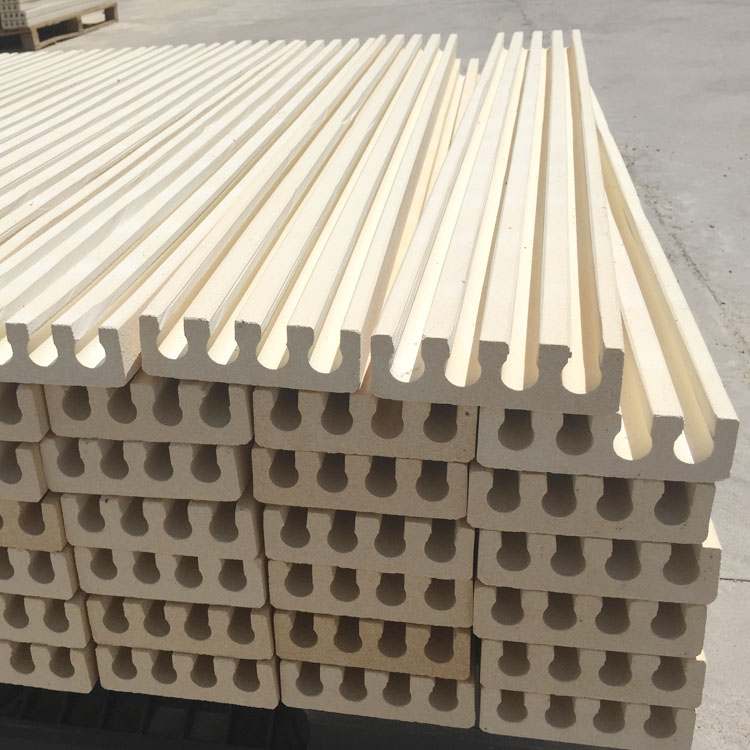In high-temperature heat treatment processes, kiln furniture materials are subjected to demanding thermal and mechanical stress conditions. Selecting the optimal material with reduced creep rates and superior thermal shock resistance is critical to maximizing operational efficiency and product integrity. Cordierite, with its exceptional performance within the 1000ºC–1300ºC temperature range, has emerged as a leading solution that aligns with the rigorous demands of modern manufacturing.
Kiln furniture must maintain dimensional stability and structural integrity under prolonged exposure to elevated temperatures. Key criteria include low creep deformation rates, resistance to thermal shock caused by rapid temperature changes, chemical inertness to corrosive atmospheres, and mechanical strength. Failure to meet these parameters leads to frequent replacement cycles and production downtime, impacting overall cost-efficiency.
| Material | Maximum Operating Temp (ºC) | Creep Rate (×10⁻⁶ / hr) | Thermal Shock Resistance | Typical Limitations |
|---|---|---|---|---|
| Magnesia Spinel Bricks | 1450 | 8.5 | Moderate | Susceptible to chemical corrosion |
| AZS Castables | 1500 | 6.2 | High | Higher cost, limited thermal cycling tolerance |
| Cordierite (Kiln Furniture) | 1300 | 2.1 | Excellent | Lower max temperature limit |
Cordierite, a magnesium aluminum silicate mineral, is distinguished by a low coefficient of thermal expansion (~1.5 × 10⁻⁶ /ºC), contributing significantly to its outstanding thermal shock resistance. Its inherent crystal structure minimizes strain under thermal cycling, making it ideal for ceramics firing, electronic components annealing, and catalyst carrier supports where operational temperatures typically remain within 1000ºC to 1300ºC.
Moreover, cordierite exhibits superior creep resistance: long-duration creep tests at 1200ºC have demonstrated creep rates as low as 2 × 10⁻⁶/hr, substantially lower than magnesia spinel bricks. This resistance translates directly to longer service life and reduced maintenance cycles.
Creep rate quantifies the time-dependent deformation under constant stress at high temperature, typically measured in microstrain per hour (×10⁻⁶/hr). It reflects material stability under mechanical load during heat treatment. Standard creep tests subject samples to compressive stress replicating operational loads to derive comparative data.
Thermal shock resistance measures the ability to withstand rapid temperature changes without cracking or failure. Testing involves cyclic rapid heating and cooling, often assessed through modulus of rupture retention or crack density evaluation post-treatment.
A ceramics manufacturer in Europe reported a 35% increase in kiln furniture lifespan after transitioning from magnesia spinel bricks to cordierite components in their 1250ºC firing cycle. The improved thermal shock tolerance reduced unexpected downtimes by 20%, directly supporting production stability.
Another example involves an electronics firm utilizing cordierite trays in annealing processes at 1100ºC, where creep deformation was reduced by 60% compared to previous materials, securing critical dimensional accuracy for high-precision substrates.
For industries operating within cordierite’s optimal temperature window, prioritizing this material enables enhanced durability and decreased total ownership cost by:

Industry R&D is increasingly focused on hybrid materials combining the thermal shock resistance of cordierite with the higher temperature capacity of AZS castables, aiming to create versatile solutions suited for broader operating ranges without compromising durability.
Additionally, advancements in additive manufacturing for kiln components promise custom geometries that optimize stress distribution and heat flow, further enhancing creep resistance and thermal shock tolerance.
Ready to elevate your kiln furniture performance?
Discover how cordierite-based solutions can optimize your heat treatment cycles, reduce downtime, and lower lifecycle costs. Unlock technical support and tailored recommendations today.
Contact Our Experts Now
